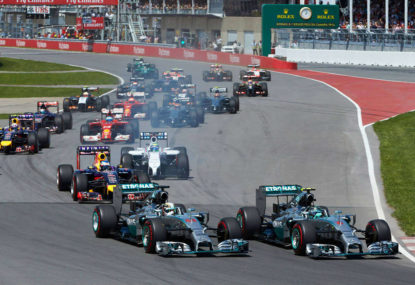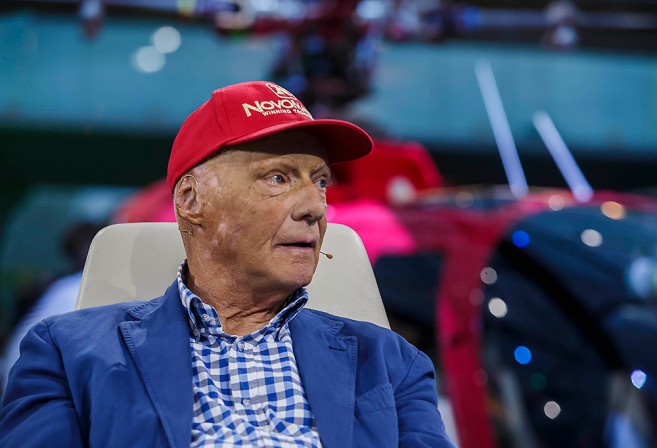Chinese Grand Prix talking points: Stroll has become the most hated F1 driver in a long time - but that's simply an unfair call!
The absolute vitriol against the Canadian that has come from the incident is beyond reprehensible.

Since the inception of motorsport, the disclaimer ‘motorsport is dangerous’ has followed all forms of racing globally, clearly highlighting the inherent and obvious risks that come with such high-speed sports.
As Formula One has evolved through time, so has the safety around it. Whether it be immense work gone into making the cars impregnable for the drivers, or the increased safety standards at each event trackside – Formula One is already at the pinnacle of safety in motorsport.
Though since the tragic accident at the 2014 Japanese Grand Prix, which saw Marussia driver Jules Bianchi lose his life following a crash with a recovery vehicle on the circuit, the sport’s governing body has been obsessed with implementing greater cockpit protection.
The FIA last week announced that from 2018 season, the ‘Halo’ head protection device will be mandatory for all cars competing in the Formula One championship, with it being concluded that it was the best solution available.
Following trials of various devices such as the ‘Shield’, which four-time world champion Sebastian Vettel was made “dizzy” by during his test at the previous British Grand Prix, and an ‘Aeroscreen’ put forward by Red Bull, the Halo was ultimately decided upon.
As expected, the move to introduce the Halo has been met with a stinging backlash from not only fans, but past and present drivers as well as commentators alike.
Former world champion and current boss at Mercedes AMG Niki Lauda blasted the FIA’s decision when speaking to the German Auto Motor und Sport, stating “we tested the Halo, the Aeroscreen and the Shield – but none convinced 100 percent”.
“You have to make the right decision in such a situation. The Halo is the wrong one.”
I echo the Austrian’s sentiment – there ought to be more diligence done to create a solution that fully convinces all parties. Though if the sport is already at the peak of safety, is the push for increased head protection necessary?
Has the sport, once with the reputation of being ‘fast and furious’, become sanitised? So sanitised that amid a bid to return Formula One drivers to gladiatorial status by the sport’s new commercial owners, it conversely tries to further obscure the driver from the spectator?
“We are trying hard with faster cars and getting closer to the spectators to attract new fans to the sport. But this now is destroyed by an overreaction,” Lauda continued.
“The Halo destroys the DNA of an F1 car. The FIA has made F1 as safe as it gets. Also, the danger of flying wheels is largely eliminated, because the wheels are always more firmly attached. The risk to the drivers has become minimal.

(Andreas Kolarik/Red Bull Content Pool)
“There is 100 percent a better solution that the Halo. Otherwise we would not have tried three ideas.
“It would have been more sensible to go in the direction that if we find something that does not destroy the looks of the car, that it be introduced in 2019.
“It’s as simple as that. There is no reason to do something we will regret later.”
While the FIA’s intention cannot be bastardised completely, it is once again the manner in which they have conducted themselves in pushing for head protection in Formula One, which should be scrutinised.
Even with such limited testing thus far, yielding inconclusive evidence, the governing body of world motorsport is happily to once again haphazardly pursue a polarising path which could have a negative impact on Formula One.
It must be asked also, why other categories aren’t as vigorously pursuing this avenue as Formula One is. The FIA used the deaths of Brits Dan Wheldon and Justin Wilson in the past six-years on the IndyCar scene as examples during their quest for increased head protection. Yet IndyCar seem not as ardent to embrace this.
Despite citing those incidents, the Halo as it is would have done little to have prevented the horrific accident involving Felipe Massa in 2009, when a small spring from the car he was following came loose and hit the Brazilian at speed in the head, rendering him unconscious.
Even when applied to Bianchi’s own crash, little has been suggested to confirm that the application of the Halo would have minimised the damage caused by his collision with that JCB recovery vehicle.
What implications practically will the Halo have? Could it do more harm than good in 2018, when it is seen adorning next year’s Formula One cars? The questions are infinite.
Despite the touchiness of safety as a topic in Formula One, it is fair to conclude that all avenues have not been exploited when approaching the matter of increasing head protection. It is at a point now where the FIA will look unfavourable regardless of whether the Halo will be introduced or is canned.
Motorsport is inherently dangerous and that is what everyone accepts when partaking. It is similar to playing contact sports, where the risk for injuries is just as high as modern motorsport. In the end, it must be accepted as the occupational hazard it is – or risk forever losing sport as a fun part of life.